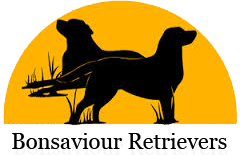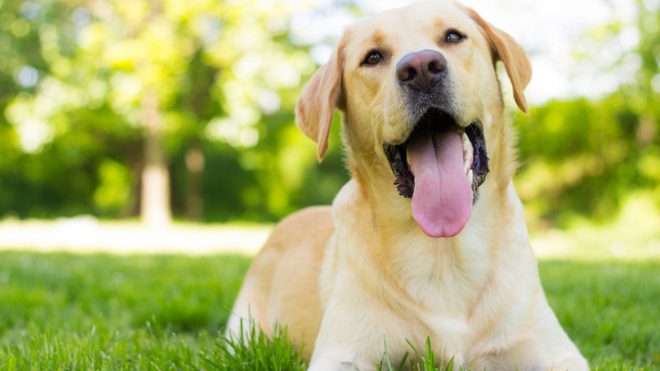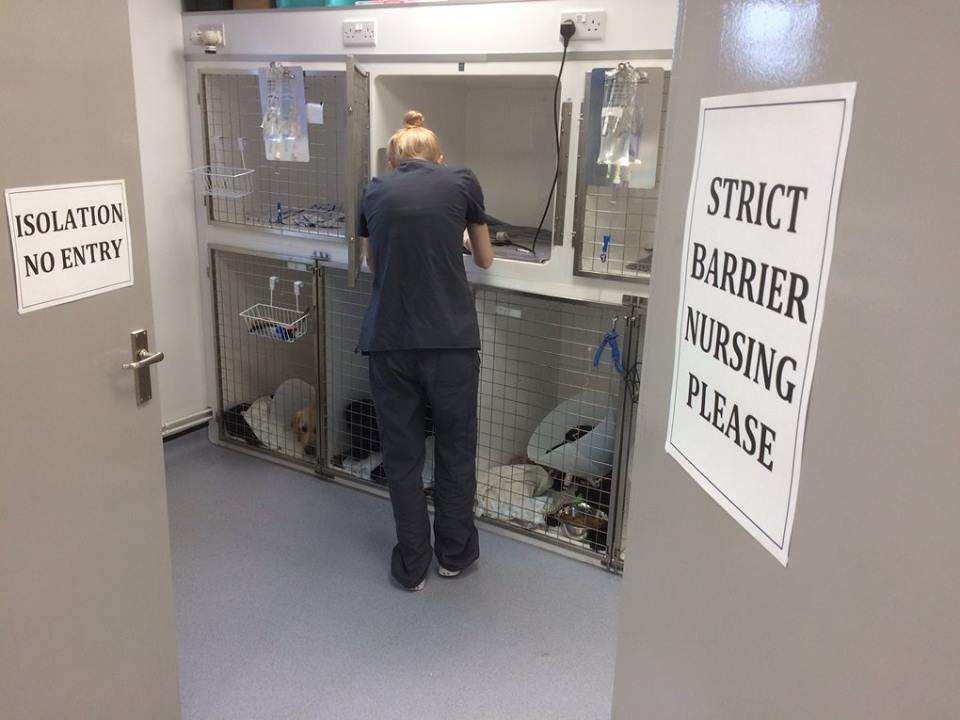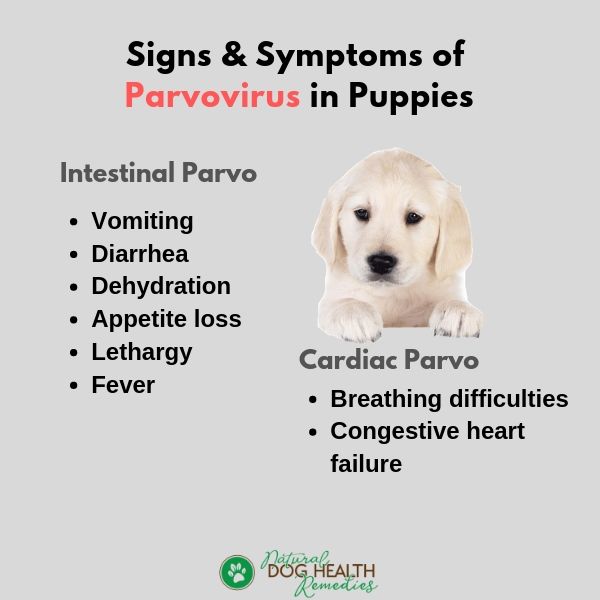
Parvovirus
Canine parvovirus is a highly contagious viral disease that can result in a life-threatening illness. Parvovirus most severely affects the intestinal tract but also attacks the white blood cells, and when young animals are infected, the virus can damage the heart muscle and cause lifelong cardiac problem.

How Is Parvovirus Diagnosed?
Parvovirus can be diagnosed via stool samples or blood tests on your dog.
Which Dogs Are Prone to Parvovirus?
Dogs that are NOT vaccinated, puppies and adolescent are most susceptible to contracting Parvovirus. Some breeds are known to be at a higher risk to contracting the disease – specifically Rottweilers, Dobermans, Pinschers, Labrador Retrievers, American Staffordshire Terriers and German Shepherds. All breeds however should be vaccinated to minimise the risk to them.
What Are the General Symptoms of Parvovirus?
The general symptoms of Parvovirus include lethargy, severe vomiting, loss of appetite and bloody, foul-smelling diarrhoea which can lead to life-threatening dehydration.
How Is Parvovirus Transmitted?
Parvovirus is highly contagious and spreads rapidly between dogs. It can spread through all bodily fluids, including poo and vomit.
Canine parvovirus affects most members of the dog family including foxes – we do know of a local case where an unvaccinated dog contracted parvo from fox poo in the garden and sadly died as a result.
If your dog has come into contact with bedding, food and water bowls, carpet, or a kennel that a dog with parvovirus has touched, they can catch the virus, in fact dogs can catch it just from sniffing another dog or through another dog’s poo.
Humans cannot get canine parvovirus from their dogs, however they can spread parvo through contact spread by shoes, clothing, human hands, and even car tyres.
How to prevent your dog contracting Parvovirus
Vaccination is absolutely critical. We recommend that puppies should receive their first vaccination at 7-8 weeks and the second once the puppy is over 10 weeks of age. In outbreaks of Parvo infection, vets may advise vaccinating younger puppies and giving more than just 2 vaccinations, with the final one at 16 weeks. Previously vaccinated adult dogs need boosters every year.
There are some other steps you can take to minimise the risk of coming in to contact with the virus:
-
Limit your puppy or unvaccinated dog’s exposure to other dogs until he’s had his first two vaccinations, unless you are completely sure the other dogs are fully vaccinated.
-
Avoid places where your puppy or unvaccinated dog could be exposed to parvovirus from unvaccinated dogs – this includes dog parks, pet shops, playgroups and puppy parties, and other public areas until your dog or puppy is fully vaccinated.
-
When visiting your vet for wellness check-ups and vaccinations, carry your puppy in your arms outside and leave him on your lap whilst in the waiting room. Walking where other dogs have walked and gone to the bathroom will increase your puppy’s risk of contracting disease.
-
Parvovirus is very difficult to kill and can live in the environment for over a year. If you suspect any infection could take place near your house or in your garden, you can use a 1:32 dilution of bleach (1/2 cup bleach in a gallon of water).
Regular soaps and disinfectants DO NOT kill parvovirus. Areas that cannot be cleaned with bleach may remain contaminated. Remember, the virus can survive on a variety of objects, including food bowls, shoes, clothes, carpet and floors. -
If you work or spend time in places where you have contact with dogs, change your clothes and shoes before returning home to your dog or puppy.
-
If your dog or puppy is vomiting, has diarrhoea, is not eating or is lethargic, you should bring him in as soon as possible. These are all symptoms of parvovirus but remember your dog may only show one symptom!
-
If you are considering adopting a new dog, we encourage leaving your unvaccinated puppies or dogs at home. It is very important to do a meet and greet, but take the time to make sure your dog is fully vaccinated first!
Parvovirus is potentially fatal, so your dog must be seen as soon as possible. If you suspect that your dog or puppy may have Parvovirus please call Your Vet first before bringing them in – it is really important that we do not put other dogs at potential risk too.
PARVOVIRUS UPDATE – JUNE 2018
The past weeks have been gruelling for our nurses in many ways. A litter of heart-wrenchingly adorable puppies arrived with all the signs of Parvovirus infection. This dreaded disease is a killer – of patients, emotions, resources and resolve.

The puppies start off vomiting small amounts and then they begin to have diarrhoea. Both increase in frequency and foulness, rapidly progressing to a bloody diarrhoea as the entire lining of the intestines is killed off. Untreated, all those affected die from dehydration and starvation.
For our nurses, a 24 hour cycle of never-ending cleaning-up began which lasted for 2 weeks. As one nurse commented in exhaustion, as soon as they finished cleaning one pup, the next one would mess all over itself, and then the next, often several in tandem.
The only way to enable them to survive is continual, ongoing intra-venous fluids. The nurses began to hear the beep-beep-beep of the drip pumps in their sleep, signalling a patient that needed a new bag of fluid or one that had managed to chew its drip-line.
Several of the nurses had to take time off from exhaustion, others are walking around like zombies (even more than their normal zombie-like state). Some of the vets who were off-duty came in to relieve the nurses overnight. They too, look shattered.
But we pulled them through. Every single one of them. They all went home over the weekend and the owners report that they are coping. Well done to everyone who spent long hours injecting medicines into drip-lines, or replacing puppy-pads until backs feel as if they are going to break and knees protest in agony from kneeling to scrub floors.
Well done to those who went home in tears, convinced that all their efforts were in vain and the pups would never make it. Well done to those who feel as if they will never get the smell of the disease out of their nostrils, no matter how long they live. Well done all.
Every single one of us hopes we never see another Parvo-virus case again. Please, please make sure you get your dog vaccinated, especially the young ones.”
Don Bremner, Veterinary Surgeon

How Parvo Infection Happens
Whether or not infection happens depends on the interaction of three factors: host immune status; strength/strain of the virus, and environmental factors.
Where does the Virus come from?
Remember that this virus has been around since the 1970s, is hard to disinfect, and is shed in extremely large numbers by infected dogs. This means that there is virus everywhere: on every carpet, on every floor, in every yard and park. Virus is shed in the stool for the first two weeks or less after the initial infection but only a tiny portion of infected stool - which could be months old depending on the environmental temperature and humidity - is needed to infect a non-immune dog. Some dogs become what is called sub clinically infected, which means they do not appear particularly sick. These animals tend not to be confined since no one knows they are infected, thus they can spread virus around a large area depending on where they leave their droppings.
Natural Protection?
When puppies are born, they are completely unable to make antibodies against any infectious invader. They would be totally unprotected except that nature has created a system to protect them. Their mother secretes a specific type of milk called colostrum for the first day or two after giving birth. It contains all the antibodies that the mother dog has circulating in her own body and in this way, she gives her own immune experience to her off-spring (only of she has been properly vaccinated). These antibodies are protective until they wear off sometime in the first 2- 4 months of the puppy’s life. How much colostrum an individual puppy gets depends on its birth order and how strong it nurses; not all puppies get the same amount of antibodies. Every nine days the antibody levels possessed by the puppies drops by half. When the antibody level drops to a certain level, they no longer have enough antibodies to protect them and if they are exposed to a large enough number of viral particles, they will get infected.
We recommend that puppies be restricted from public outdoor areas
until their vaccination series is completed at age 16 weeks.
There is a period lasting a good week or so during which the puppy has no antibody protection leftover from its mother but still is not yet competent to respond to vaccination. This window is where even the most well cared for puppies get infected.
Incubation
The virus enters the body through the mouth as the puppy cleans itself or eats food off the ground or floor. A minuscule amount of infected stool is all it takes.
There is a 3 to 7 day incubation period before the puppy seems obviously ill.
Upon entering the body, the virus seeks out the nearest rapidly dividing group of cells. The lymph nodes in the throat fit the bill and the virus sets up here first and replicates to large numbers. After a couple of days, so much virus has been produced that significant amounts of it have been released into the bloodstream. Over the next 3 to 4 days, the virus seeks new organs containing the rapidly dividing cells it needs: the bone marrow and the delicate intestinal cells.
Within the bone marrow, the virus is responsible for destruction of young cells of the immune system. By killing these cells, it knocks out the body's best defense and ensures itself a reign of terror in the GI tract where its most devastating effects occur. All parvoviral infections are characterized by a drop in white blood cell count due to the bone marrow infection. Seeing this on a blood test may help clinch the diagnosis of parvoviral infection. Also, a veterinarian may choose to monitor white blood cell count or even attempt to artificially raise the white blood cell count in an infected puppy through treatment.
The GI tract is where the heaviest damage occurs. The normal intestine possesses little finger-like protrusions called villi. Having these tiny fingers greatly increases the surface area available for the absorption of fluid and nutrients. To make the surface area available for absorption greater still, the villi possess microvilli, which are microscopic protrusions. The cells of the villi are relatively short-lived and are readily replaced by new cells. The source of the new cells is the rapidly dividing area at the foot of the villi called the crypts of Lieberkuhn. Parvovirus strikes right at the crypt. Without new cells coming from the crypt, the villus becomes blunted and unable to absorb nutrients. Diarrhea in large quantities results, not to mention nausea. The barrier separating the digestive bacteria from the blood stream breaks down. The diarrhea becomes bloody and bacteria can enter the body, causing widespread infection (remember that that virus has also simultaneously destroyed the bone marrow's ability to respond immunologically).
The virus kills one of two ways:
-
Diarrhea and vomiting lead to extreme fluid loss and dehydration until shock and death result.
-
Loss of the intestinal barrier allows bacterial invasion of potentially the entire body. Septic toxins from these bacteria result in death.
How is Survival Possible?
Even parvovirus cannot disrupt the entire immune system. Plus, every day that goes by allows more antibodies to be produced. This antibody can bind and inactivate the virus. Whether survival is possible amounts to a race between the damaged immune system trying to recover and respond versus the fluid loss and bacterial invasion.
Disinfecting After Parvo
Canine parvovirus is especially hardy in the environment. It is readily carried on shoes or clothing to new areas (which accounts for its rapid worldwide spread shortly after its original appearance). It is able to survive freezing temperatures in the ground during winter, plus many household disinfectants are not capable of killing it indoors.Given that this is such a tough virus to destroy, many people want to know exactly what they must do to disinfect an area that has contained an infected dog or how long they must wait before safely introducing a new dog to a previously contaminated area.
Here is what we know about how contaminated an environment is likely to be:
-
Infected dogs shed virus (in their stool) in gigantic amounts during the 2 weeks following exposure. Because such enormous amounts of virus are shed, there is a HUGE potential for environmental contamination when an infected dog has been there.
-
It is important to realize that because the canine parvovirus is so hardy in the environment, it is considered ubiquitous. This means that NO ENVIRONMENT is free from this virus unless it is regularly disinfected.
A parvoviral infection can be picked up ANYWHERE although it is easier to pick up an infection in an area where an infected dog has been simply because of the larger amounts of virus in a contaminated area.
-
Whether an individual dog gets infected or not depends on the number of viral particles the dog experiences, what kind of immune experience the dog has had with the virus before (vaccinated? previously infected? how much past exposure?), and how strong the individual dog is (stress factors, diet, etc.).
A typical/average infectious dose for an unvaccinated dog is 1000 viral particles. For some dogs far less is needed. For other dogs, far more is needed. An infected dog sheds 35 million viral particles (35,000 TIMES the typical infectious dose) per OUNCE of stool.
Indoor decontamination:
-
Indoors, the virus loses its infectivity within one month; therefore, it should be safe to introduce a new puppy indoors one month after the active infection has ended.
Outdoor decontamination:
-
Freezing is completely protective to the virus. If the outdoors is contaminated and is frozen, one must wait for it to thaw out before safely introducing a new puppy.
-
Shaded areas should be considered contaminated for 7 months.
-
Areas with good sunlight exposure should be considered contaminated for 5 months.
Of course, the above presupposes that no decontamination steps (other than waiting) have been taken. In most households, owners want to know how to disinfect their homes to create a safer environment for the other dogs there or to create a safe environment for a new or replacement puppy.
Here's what we know about disinfection:
-
Despite the introduction of new cleaners with all sorts of claims, parvovirus remains virtually impossible to completely remove from an environment. The goal of decontamination is to reduce the number of viral particles to an acceptable level.
-
The best and most effective disinfectant against viruses (including parvoviruses) is BLEACH. One part bleach is mixed with 30 parts water and is applied to bowls, floors, surfaces, toys, bedding, and anything contaminated that is colorfast or for which color changes are not important. At least 10 minutes of contact time with the bleach solution is needed to kill the virus. Steam cleaning is also able to kill the virus.
BLEACH COMPLETELY KILLS PARVOVIRUS.
-
Disinfection becomes problematic for non-bleachable surfaces such as carpet or lawn. Outdoors, if good drainage is available, thorough watering down of the area may dilute any virus present. Since carpet is indoors, it may be best to simply wait a good month or so for the virus to die off before allowing any puppies access to the area.